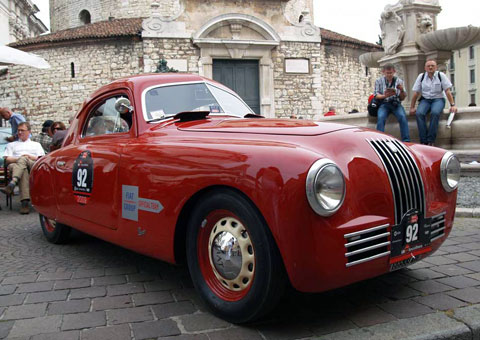
Hot on the tail of Alfa, Ferrari and Lancia, Fiat did their berlinetta act on the 1100, culminating in the 1947 1100S Mille Miglia model. It in turn was preceded by the absolutely berlinetta 1935 Balilla 508S.
Photos by Alessandro Gerelli
Story by staff
In this part, Alessandro Gerelli brings us the Mille Miglia berlinettas from Fiat to Siata. As we have related in Part I, Enzo Ferrari was implicated in the birth of the term berlinetta. But was this so, and if so, how?
Alfa’s first sojourn with a coupe in the Mille Miglia was in 1932, when a Touring bodied 8C 2300 coupe placed fourth overall in the event. The first the two-place coupes were constructed using the Weyman patents (Charles Weyman was a brilliant French inventor who created a method of building car bodies which would flex with the chassis), but the name berlinetta was not yet commonly used. Instead, Touring called their 1750 Alfa “coupe royal”, others used the term aerodynamic, and in some cases, coupe spyders. Coupes were also indicated as “guida interna”, or interior driving position. Fashionable too, were the lyrical names such as “Freccia di Belzebu” (Belzebub’s Arrow), or better yet, “Soffio di Satana”, Satan’s Breath.
It was not until the introduction of the Alfa 6C 2300–a long overlooked but historically significant Alfa Romeo–was introduced in 1934 that the coachbuilders widely began to use both all steel construction and or aluminum construction, based on either the pressed steel process or the “Superleggera” method of pinning sheets of aluminum or steel over a lightweight tubular frame. Suddenly streamlined coupes proliferated–and once and for all, designers could easily create concave and convex curvatures. In a drawing dated 1934, we see the words “Berlinetta Speciale 2 posti Superleggera Modello”, clearly describing the coupe body sketched for the 6C 2300 by Touring. What had perhaps been the vernacular became official.
Ferrari would enter a team of these new six cylinder Alfas–less sophisticated than their bigger brothers– but fast and reliable–at Pescara and take home the overall win. The Pescara Alfas also won their class at the Mille Miglia. It is perhaps here that the now familiar term and Scuderia Ferrari came together. The success of the Scuderia Ferrari Alfa “Pescara” berlinetta ensured the widespread use of the term. Was this perhaps what Sergio Pininfarina meant to say in the introduction to the book “Berlinettas, Classic coupes of yesterday and today”?
Whatever Ferrari’s role, after 1935, berlinetta belonged to all and sundry, and would be applied to anything with two doors and a fast back. It continues to this day. For Part 2, Gerelli concentrates on the post war Fiats and Maseratis.
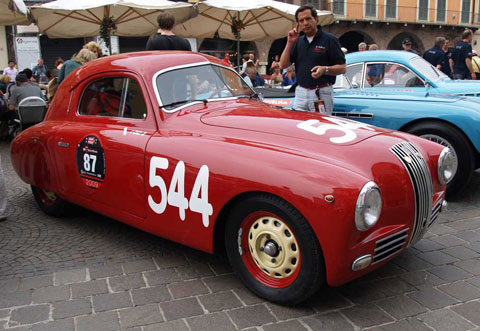
Another view of another Fiat 1100S Mille Miglia. In 1947, the model was driven by event organizer Aymo Maggi and Antonio Brivio.
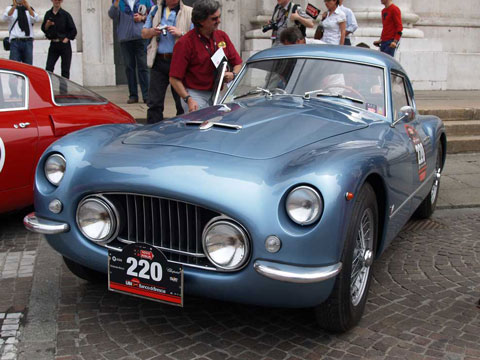
Fiat 8V designed by Fabio Rapi was the next step for Fiat’s entree into the berlinetta sweepstakes. This is a series 1.
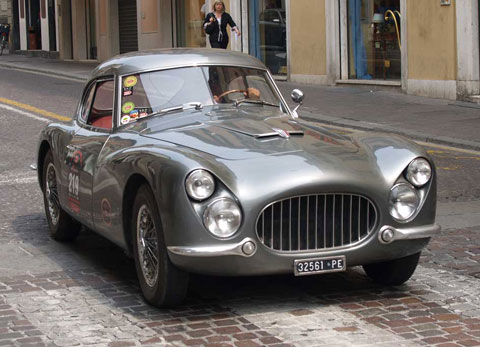
Last of the batch, the Fiat 8V was further refined into a classic Gran Tourer. Running in the 2 liter classes, the 8Vs were successful enough considering Ferrari and Maserati compeitition.
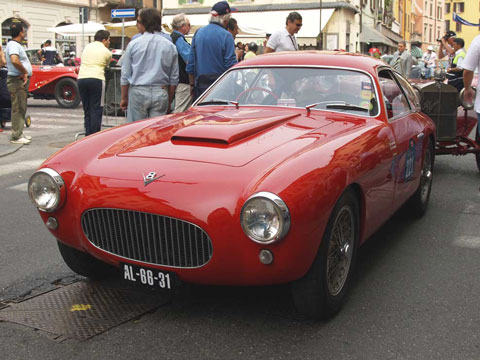
The Zagato variant of the 8V, due to its extremely light weight, (most Fiat bodied cars were steel) was dominant in Italian national events for many years. By the mid 1950s the berlinetta was the coachwork of choice for many independent racers.
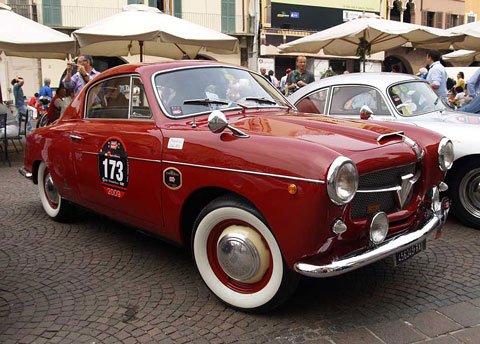
An almost-berlinetta. The 1953-54 Fiat 1100 TV (Touring Veloce) was a sporting version of the 1100/103 with a top speed of 85 mph and in all versions, very popular in the Mille Miglia. Body by Pininfarina.
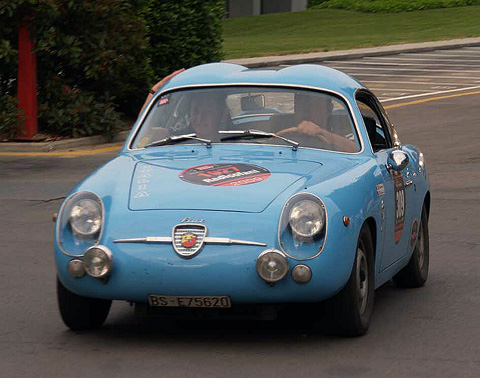
An Abarth 750 GT Zagato, of course, this one a series III, but we’ll file under Fiat for now. They were class winners in the last Mille Miglia.
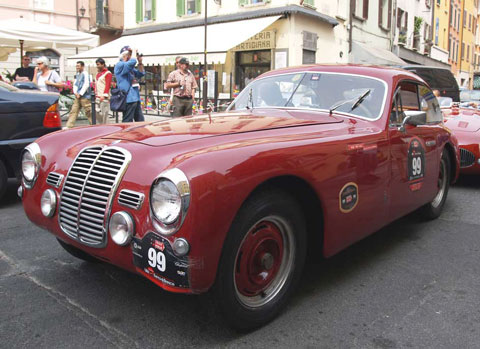
Shorn of the Maserati brothers, the Orsis immediately began to create road cars based on the Maserati-designed 1500s. Primary were the delightful Pininfarina berlinettas, produced in 1947.
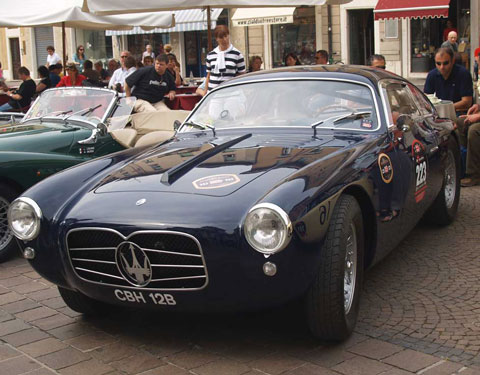 Ironically, Touring, who did so much to create the berlinetta concept, was overshadowed by Zagato in the mid 1950s. Here is Zagato at its berlinetta best with the A6GC Maserati in 1954.
Ironically, Touring, who did so much to create the berlinetta concept, was overshadowed by Zagato in the mid 1950s. Here is Zagato at its berlinetta best with the A6GC Maserati in 1954.
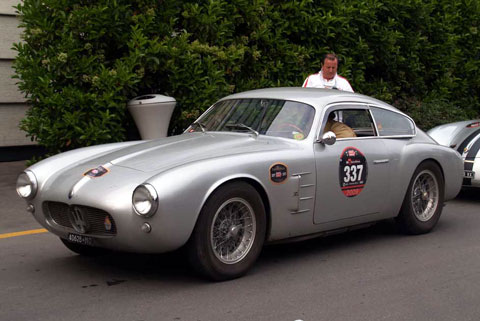
Zagato again, with a more comp version of the A6GC. It is probably that Zagato actually was the first to use the superleggera construction method, but Touring made it famous.
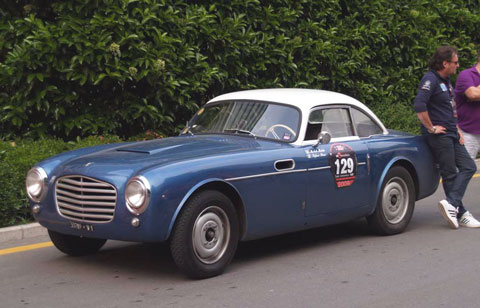 What is this, a coupe or can it be called a berlinetta? Note that almost all of the cars we have pictured in this series are fastbacks. This notchback Siata Daina Gran Sport of 1952 by Farina is splendid by whatever name.
What is this, a coupe or can it be called a berlinetta? Note that almost all of the cars we have pictured in this series are fastbacks. This notchback Siata Daina Gran Sport of 1952 by Farina is splendid by whatever name.
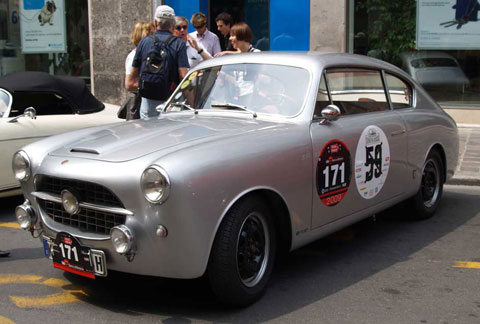
This Siata version of the 1100 TV little berlinetta concept sported smooth truly fastback coachwork by Vignale.
Gentlemen:
There is no such thing as an Alfa Romeo Pescara. All the 6c2300A (solid axle cars) with 2 carbs have chassis plates that say Gran Turismo
All the swing axle 6c2300Bs 2 carb cars have chassis plates that say 6c2300B Mille Miglia.
Scuderia Ferrari owned no 6c2300As, 6c2300Bs, or 6c2500s of any type.
The 6c2300A that won the 1934 Pescara sports car race was actually a 6c2300A Gran Turismo. The Pescara name was used (but never officially) after the win in that race by Cortese of Scuderia Ambrosiana.
Stu,
Good to see you are still alive and kicking and haven’t lost your copy of “Alfa Romeo: All cars from 1910.”
Your point is well taken.
Of course Fusi, on page 317 of the above mentioned book (third edition, 1978), lists a “Coupe 2
posti Pininfarina au autotelaio 6C 2300 B Pescara 1st serie. “
We don’t think that he meant the name of the model as Pescara, do you? Of course not.
I think that since the coachbuilders generally gave names to cars, and yet official
nomenclatures, usually reserved for the chassis only, made the entire issue painful for historians. In the article, I used the term Pescara loosely and with paranthesis to
define which Alfa was the subject. Like you, I don’t think that Pescara was an official Alfa Romeo factory model name.
We are still trying to determine if the word berlinetta was ever an official
Ferrari model name for the tdf, which in turn was never the official model
name. It is used that way in the official brochure. But everyone wants to
call them Tdfs.
A much better question might be asked of why Sergio Pininfarina made such a
statement about Ferrari’s invention of the word berlinetta.
We’d love to hear from our readers on that subject.
Lovely history. Nice work on definitions, not too often seen in the press, and you are to be thanked for efforts to be rigorous.
Of course, one might hope to see a B20 somewhere in this picture, or are you saying a GT is not a berlinetta?
Love all the cars pictured! Have seen them reported nowhere else. Thanks Pete and Co.
-cliff reuter
etceterini.com
Interesting analysis. In my mind “berlinetta” makes me think of a non-fastback car–a “litle sedan” like a regular car but with no rear seat. The term “Ferrari berlinetta” instantly makes me think of that notchback model we used to call the “Thunderbird Ferrari.” Nothing analytical; just a personal reaction
Agreed! Berlina – berlinetta: easy. Thanks for the great photos, but great coverage like this tends to spoil readers. There are other Siatas that qualify. Raymond Milo had a marvellous Siata Daina every bit as pretty as an Aurelia – someone should have restored it by now?? Are there any other etceterini who made berlinettas as well as their barchettas? I don’t know – we certainly see none of them in Australia and I have only been lucky enough to see them in places like de Boer garages. Please keep bringing them on.
Great story, but I can’t believe that guy is sitting on the Dania
The red Fiat 1100TV is an exact duplicate of the one I owned back in 1959-60. It was a pretty little thing, but not too reliable as transportation. But at that time, what else could a working stiff get that looked as good and had an all aluminum hand made Farina body. Very nostalgic.
The definition used by David Lavar in Part I has some real merit. With greatest respect to my good friend Geoff, who commented above, I would not classify the B20 as a berlinetta, since you can actually stuff people that you care about into its “rear seat”. By contrast the putting a person into the rear of a berlinetta, such as a Cisitalia 202, would probably result in permanent damage to the passenger.
Ed Godshalk
Just to add to the confusion, the factory invoice for my Maserati dated 15 September 1949 states: “CARROZZERIA: Berlinetta a due posti”. Does this imply that other numbers of “posti” are possible in a berlinetta ? The car is definitely a fastback and was equipped with bumpers, although it was intended for competition.
Interesting site, well done. I came accross this site when searching for info on the Fiat 1100S, which I have in my collection of, … model cars. Anyone knows when (from .. to) these were made? Bert
How about the Moretti 750 Gran Sport. Karl Ludvigsen had one that now lives in the US and is one of the most perfect berlinettas Ive ever seen